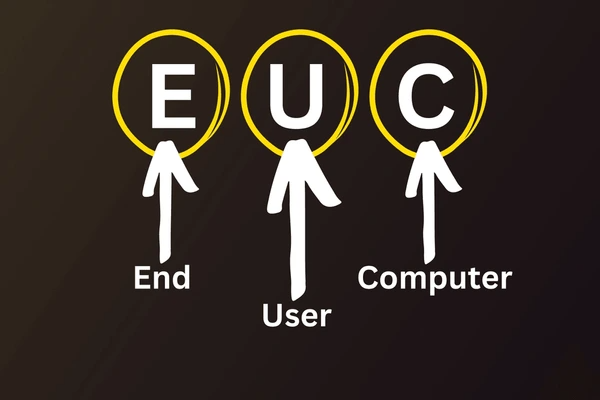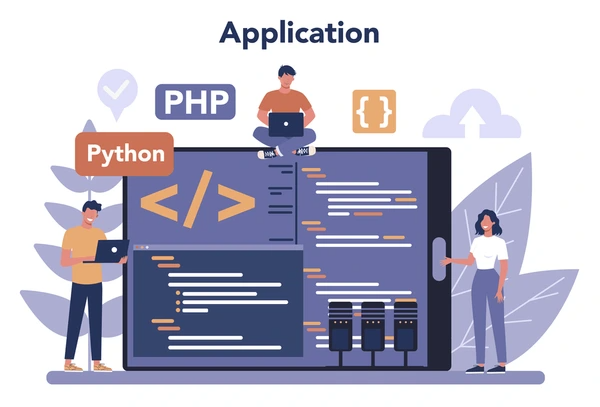
Understanding the EUC Meaning
EUC, meaning End-User Computing, refers to technologies and practices that enable users to securely access and manage data and applications from any device or location. It includes solutions like virtual desktop infrastructure (VDI), application virtualization, desktop as a service (DaaS), mobile device management (MDM), and bring-your-own-device (BYOD) policies. By enhancing productivity and flexibility, EUC empowers users to work efficiently while maintaining secure and seamless access to business resources. This article dives deeper into the EUC meaning, its components, and how it supports modern, dynamic work environments.
Key Features of End-User Computing

- 1. User-Friendly Interfaces
EUC solutions prioritize intuitive graphical user interfaces (GUIs), allowing users to perform tasks without needing extensive technical expertise. - 2. Automation and Productivity Tools
End-users can use tools like Microsoft Excel to automate repetitive tasks, streamlining workflows and increasing efficiency in daily operations. - 3. Device and Application Management
EUC includes managing devices such as desktops, laptops, smartphones, and tablets. It also involves tools for enterprise mobility, mobile device, and application management. - 4. Virtual Desktop Infrastructure (VDI)
VDI is a common EUC strategy, enabling users to access virtual desktops and applications from any device. This supports flexibility and enhances remote work capabilities. - 5. Robust Security Features
EUC solutions integrate data encryption, access control, and security monitoring to protect sensitive data and applications from potential threats. - 6. Risk Management Tools
These tools help organizations identify and address risks tied to end-user activities, such as spreadsheet errors or misuse of applications. - 7. Policy and Governance Frameworks
EUC strategies often include policies and governance to ensure secure, efficient use of computing resources while maintaining compliance.
Key Components and Functionality of EUC in IT Environments
Virtual Desktop Infrastructure (VDI)
VDI plays a crucial role in EUC by allowing users to access virtual desktops from various devices. This centralizes desktop environments, simplifying management, enhancing security, and ensuring a consistent user experience across multiple platforms.
Application Management
EUC includes tools for managing applications, ensuring users have the software they need while maintaining control over updates and distribution. This is especially vital in remote and hybrid work settings, where seamless application access is essential.

Security and Compliance
Security remains a top priority in EUC solutions. Features like enterprise browsers, secure remote access, and endpoint management protect sensitive data and help organizations meet regulatory requirements.
User Interface Controls (UICs)
Intuitive graphical interfaces allow users to interact with systems more efficiently. UICs enhance productivity by streamlining data entry, reducing errors, and improving the overall user experience.
End-User Training and Support
Comprehensive training and support are integral to effective EUC strategies. Providing users with the skills and knowledge to utilize computing resources ensures maximum productivity. Ongoing education and supervisory support help users adapt to new tools and processes.
Key Benefits of End-User Computing (EUC)
- 1. Centralized Management
EUC simplifies the management of desktop fleets, making it easier for IT teams to oversee systems. It reduces the need for specialized IT skills by streamlining administration tasks. - 2. Cost Efficiency
Allowing employees to use their own devices significantly lowers hardware and maintenance costs. This approach also optimizes resource allocation, improving overall cost-effectiveness. - 3. Enhanced Security
Centralized control of applications and data enhances security management. IT teams can remotely enforce policies, monitor system usage, and manage updates to protect sensitive information.
Technological Advancements in EUC
- 1. Cloud Computing
Cloud-based technologies like Desktop-as-a-Service (DaaS) and VDI enable businesses to deliver secure, scalable desktops and applications. These solutions reduce reliance on on-premises hardware while enhancing flexibility. - 2. Artificial Intelligence (AI) and Machine Learning (ML)
AI-powered EUC tools analyze user behavior, predict potential issues, and detect threats in real-time. These advancements improve both system performance and security. - 3. Identity and Access Management (IAM)
Innovative IAM solutions, including multifactor authentication (MFA) and single sign-on (SSO), enhance user convenience while strengthening system security.

Applications of EUC in Various Industries
1. Banking and Financial Services
EUC supports critical financial processes, including accounting, finance, and risk management. Organizations use it to create customized applications that meet regulatory and business-specific requirements, ensuring compliance and operational efficiency.
2. Healthcare
In healthcare, EUC enables the development of applications for patient management, electronic health records (EHR), and clinical decision support systems. These tools improve patient care, streamline administrative tasks, and enhance decision-making for providers.
3. Manufacturing
EUC plays a key role in manufacturing by supporting production planning, quality control, and supply chain management. It integrates with manufacturing execution systems (MES) to optimize production processes and enhance efficiency.
5. Education
EUC supports educational institutions by creating student information systems, online learning platforms, and administrative management applications. These solutions help manage student data, facilitate online education, and improve administrative efficiency.
6. Government
In the public sector, EUC helps develop applications for citizen services, e-governance, and public health management. These solutions improve government efficiency and foster better engagement with citizens.
7. IT and Telecom
The IT and telecom industry uses EUC to create applications for network management, customer support, and service provisioning. These tools help operators manage infrastructure and deliver superior customer service.
8. Automotive
EUC supports the automotive sector by enabling the development of applications for supply chain management, quality control, and CRM. These tools help optimize supply chain processes and improve customer satisfaction.
Application Cases
| Product/Project | Technical Outcomes | Application Scenarios |
|---|---|---|
| EUC Research California State University-San Bernardino | Provided insights into measuring the success of end-user computing initiatives and applications. | Academic research on end-user computing practices and methodologies. |
| EUC Research University of South Australia | Explored the benefits, risks, and management strategies for end-user computing in organizations. | Academic research on end-user computing practices and methodologies. |
| EUC Skills Assessment University of Nevada, Reno | Developed an instrument to measure perceived end-user computing skills, enabling organizations to assess their workforce’s EUC competencies. | Evaluating and improving end-user computing skills in organizations. |
| EUC Training Transfer Creighton University | Identified factors influencing the effective transfer of end-user computing training, such as computer self-efficacy, pre-training motivation, and supervisory support. | Enhancing the effectiveness of end-user computing training programs in organizations. |
To get detailed scientific explanations of EUC Meaning, try Patsnap Eureka.

